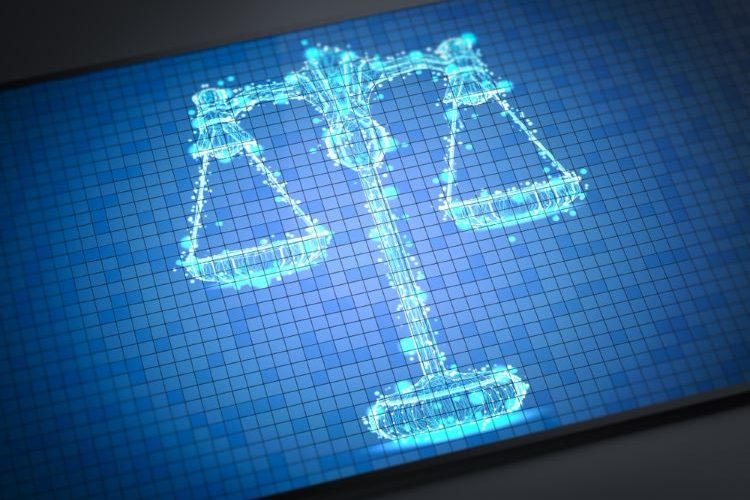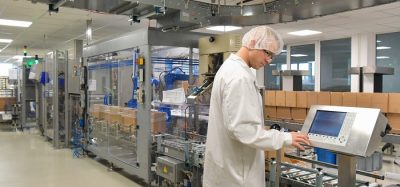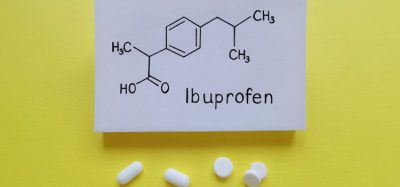Regulation and legislation in the era of automation and digitalisation
Posted: 7 June 2024 | Antje Brambrink (Finnegan), Charles Collins-Chase (Finnegan), Marco Thurner (Finnegan) | No comments yet
Experts at IP firm Finnegan discuss if the pharmaceutical industry is ready for the innovation and technologies that digitalisation and automation will bring, and whether these advances are a threat or ally to intellectual property rights in the sector.


Friend or foe? Pharmaceutical companies ask themselves this question before embracing the latest technologies because every innovation comes with both opportunities and risks. Today, technological advancements in artificial intelligence (AI), machine learning (ML), digitalisation, and robotic manufacturing automation solutions stand to revolutionise R&D, clinical trials, and manufacturing in the pharmaceutical industry. According to recent estimates, the opportunity from generative AI alone could produce up to $110 billion in annual value across the pharmaceutical industry value chain.1
But while digitalisation and artificial intelligence offer extraordinary benefits, they also involve legal pitfalls. In this article, we discuss how embracing these technologies might thus be possible for the pharmaceutical industry.
Emerging technologies in drug development
AI and ML in drug discovery
AI and ML offer tremendous promise throughout the lifecycle of drugs, including in R&D, manufacturing, QA/QC, and post marketing surveillance. In drug discovery, AI systems can predict drug-protein interaction, conduct de novo drug design, and screen drug activities (bioactivity, toxicity) and other properties. AI in drug discovery thus may significantly reduce costs in preclinical research and lead to discovery of valuable new therapies. By some estimates, AI and ML could lead to an additional 50 novel therapies over a 10-year period (a $50-billion market opportunity).2 And AI’s use in clinical studies promises to reduce costs and increase success rates.
Automation and digitalisation of drug manufacturing
Robots can be used in combination with AI, the Internet of Things (IoT), and live digital data analytics to create a connected and proactive manufacturing system”
Once a drug has been proven safe and effective and marketing authorisation is granted, the ramp-up to commercial rollout often requires manufacturing output to be increased drastically to reach peak sales as quickly as possible. This requires effective scale-up or scale-out strategies. Emerging technologies may provide useful solutions. Manufacturing robots can handle process steps and often require lower cleanroom classes and reduced man-hours. Robots can be used in combination with AI, the Internet of Things (IoT), and live digital data analytics to create a connected and proactive manufacturing system.
Digitalising clinical data
The possibility to collect, store, and share data digitally has led to the development of numerous applications in clinical drug development. Electronic case report forms, electronic patient reported outcome forms and electronic patient diaries allow to collect, track, and evaluate digital data in real time. This provides several advantages, such as improved data quality by real-time validation and verification, improved accessibility and traceability, reduced costs and time, and the opportunity to regularly check whether the trial is keeping up with set timelines.
While these technologies offer exceptional opportunities, users must also be aware of potential intellectual property hurdles they create. Fortunately, effective patent strategies can help overcome these hurdles and allow companies to maximise the value from digital innovation.
Patenting AI inventions
AI can play a major role in drug R&D. But can AI-generated innovations be protected under patent laws? Most jurisdictions have answered “no.” This issue was tested by Stephen Thaler, who filed patent applications in multiple countries, naming the AI system Device for the Autonomous Bootstrapping of Unified Sentience (DABUS) as the sole inventor. The European Patent Office (EPO), the United States Patent and Trademark Office (USPTO), the UK Intellectual Property Office, and several other jurisdictions refused to grant the patent, concluding that the inventor must be a natural person and cannot be an AI system.
But many inventorship issues remain, however. In the US, the USPTO has explained that a human must have “significantly contributed” to each claim. Companies thus must carefully identify human inventors and focus on human contributions to an invention. In some cases, this may include the people who trained an AI system to perform its work. Companies therefore must assess the role an AI system played in an invention and ensure that the correct human inventors are identified for each claim.
Patentability in the context of software and computer-implemented inventions
AI and digital innovations…create new IP challenges… which historically [pharma has] not had to grapple with the shifting legal landscape”
AI and digital innovations also raise critical questions of patent eligibility and patentability. These technologies create new IP challenges in the pharmaceutical industry, which historically have not had to grapple with the shifting legal landscape that affects software and computer-implemented inventions.
European approach
In March 2024, the European Parliament adopted the European AI Act, which is expected to enter into force in May or June 2024. The European Commission had detected a need for AI support in several areas, including the health sector, but also considered AI to impose new risks to be addressed by the AI Act. It thus provides, for example, a classification for AI systems with different requirements and obligations on a “risk-based approach.” Depending on an AI system’s individual risk category, its providers and deployers would need to comply with certain requirements. It is thus key for AI providers to make themselves familiar with the new requirements.It is a tradition under European laws that patent protection is reserved for technical creations. Accordingly, certain provisions exclude “programmes for computers” from being eligible for patenting (see eg, Art. 52 (2) c European Patent Convention (EPC) or Sec. 1 (3) of the German Patent Act (GPA)). This exclusion can be overcome, however, if a computer programme is capable of bringing about a technical effect beyond the usual physical interaction between soft- and hardware.
US approach
The US Supreme Court’s Alice decision and subsequent patent-eligibility cases under 35 USC § 101 have made it harder to obtain patents covering software- and computer-implemented inventions. Under Alice’s two-part test, claims that are “directed to” a patent-ineligible abstract idea, law of nature, or natural phenomenon are only patent eligible if they contain an “inventive concept” sufficient to transform the underlying idea or law of nature into “something more” than the underlying idea itself.
Companies seeking to patent AI systems or software should draft claims that clearly reflect a technological improvement on conventional technology, with written description detailing how the invention achieves that improvement and the resulting benefits.
Mitigating risks in collaboration and M&A agreements
Many pharmaceutical companies lack the expertise in software and computer systems necessary to develop or implement AI and automated or digitalised processes. Rather than develop this capacity in-house, many companies enter into agreements with third-party AI developers or acquire companies with these capabilities. As a result, collaborations and acquisitions related to AI have drastically increased in the pharmaceutical industry in recent years.
While these collaborations and acquisitions offer many advantages, they also raise IP risks because they inevitably require sharing confidential or trade secret information with third parties. Companies should evaluate these risks as soon as possible to ensure they adequately protect their existing IP in any third-party agreements, including nondisclosure agreements, joint development agreements, and formal collaboration agreements.
For example, companies should require partners to treat confidential or trade secret information with the same (or higher) level of secrecy that a company requires of its own employees. Agreements should also require third parties to acknowledge the value of any trade secret information they may access during a collaboration.
Agreements should also address ownership of any IP generated during a collaboration, including improvements to one partner’s existing IP, as well as the parties’ rights to the IP upon termination of the collaboration. Careful drafting and resolving issues up front can prevent disputes later.
General Data Protection Regulation in the EU
Pharmaceutical companies must carefully consider [GDPR] requirements when implementing new digital and AI-based technologies, which will use these sensitive health data in new ways and require new data-protection protocols”
As the use of digital devices and processes becomes increasingly common in clinical drug development, companies must also ensure that data are sufficiently protected.
In Europe, companies must comply with the General Data Protection Regulation (GDPR), which aims to strengthen the rights of individuals to be informed and controls how their personal data are used. Data related to health falls within the scope of sensitive data, for which the GDPR sets very strict guidelines in terms of its processing. While the US does not have a comprehensive data-privacy law like GDPR, various federal and state laws do impose privacy restrictions that companies must follow.
Pharmaceutical companies must carefully consider these requirements when implementing new digital and AI-based technologies, which will use these sensitive health data in new ways and require new data-protection protocols.
Conclusion
The rapidly evolving landscape of AI, ML, and digitalisation offers a wide range of benefits to the pharmaceutical industry, but also raise new risks and legal challenges. Legislators are trying to keep pace with this rapid innovation to ensure that continued growth is as safe as possible. Pharmaceutical companies implementing new digital technologies must therefore not only address existing IP and data-privacy challenges, but also closely monitor the constantly changing legal framework to understand their obligations and risks. Companies that do so stand to reap the rewards of these innovations and eclipse competitors that are slow to adopt digital technologies.
About the authors






Charles Collins-Chase is partner at IP firm Finnegan.
References
- Generative AI in the pharmaceutical industry: Moving from hype to reality. [Internet] McKinsey & Company. 2024. [cited 2024June]. Available from: https://www.mckinsey.com/industries/life-sciences/our-insights/generative-ai-in-the-pharmaceutical-industry-moving-from-hype-to-reality
- Why Artificial Intelligence Could Speed Drug Discovery. [Internet] Morgan Stanely. 2022. [cited 2024June]. Available from: https://www.morganstanely.com/ideas/ai-drug-discovery.
Related topics
Artificial Intelligence, Big Data, Clinical Development, Clinical Trials, Drug Development, Drug Manufacturing, Industry Insight, Manufacturing, Technology, Therapeutics









